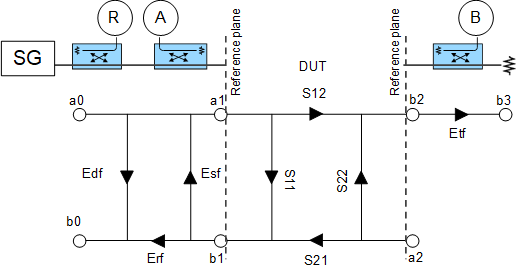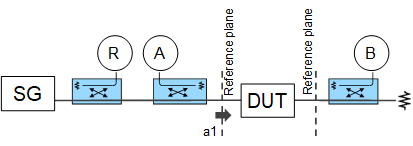
Calibrating a Modulation Distortion channel requires the following types of calibrations:
Optional calibrations:
See Also:
The S-parameter calibration with power correction is the traditional method used to compute linear error terms. Enhanced response terms are applied for correction since only the forward direction is measured. The a1, b1, and b2 waves for each tone are accurately measured with enhanced response correction. The calibration frequency range should cover all of the analysis bandwidth required for the Modulation Distortion channel.
Note: The configuration with M981xAS option 750 (M9810A and M9336A) requires a high pass filter. See Calibration with M9810A and M9336A.

The source modulation calibration compensates the IQ data to achieve a flat frequency response in gain and phase at the reference plane. Before this calibration, the receivers must be calibrated by performing the S-parameter calibration. The DUT is connected at the reference plane when performing the source modulation calibration to achieve the best accuracy.
